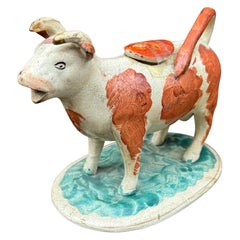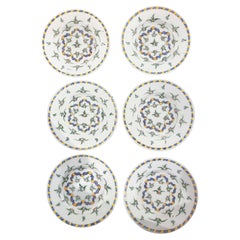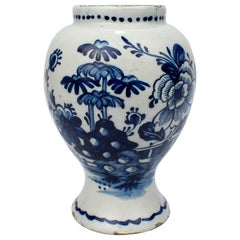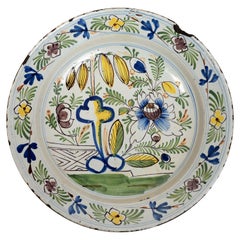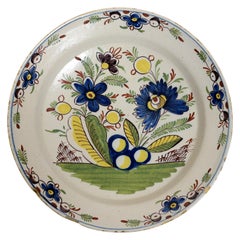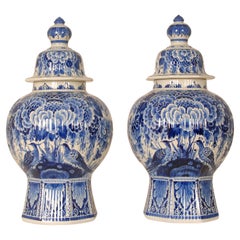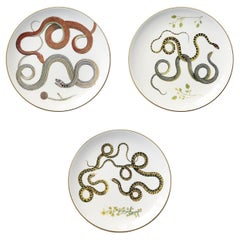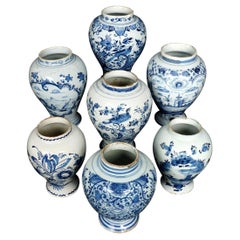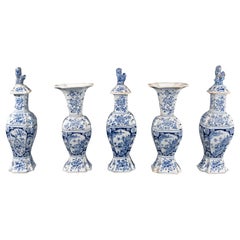Delft Pottery
1840s English Folk Art Antique Delft Pottery
Paint, Delft, Faience
Mid-18th Century Dutch Georgian Antique Delft Pottery
Ceramic, Delft, Pottery
18th Century Dutch Baroque Antique Delft Pottery
Delft
Mid-18th Century Dutch Rococo Antique Delft Pottery
Delft
Mid-18th Century Dutch Rococo Antique Delft Pottery
Delft
Early 20th Century Dutch Baroque Delft Pottery
Delft, Pottery
2010s Italian Delft Pottery
Ceramic
20th Century Swedish Art Deco Delft Pottery
1970s Dutch International Style Vintage Delft Pottery
Ceramic
Early 19th Century English Chinoiserie Antique Delft Pottery
Ironstone
19th Century English High Victorian Antique Delft Pottery
Pottery
Mid-20th Century British Mid-Century Modern Delft Pottery
Ceramic
Early 18th Century Dutch Chinoiserie Antique Delft Pottery
Earthenware, Delft, Faience
Early 18th Century Dutch Antique Delft Pottery
Delft
Mid-20th Century Dutch Delft Pottery
Ceramic, Faience
Late 19th Century Dutch Antique Delft Pottery
Delft
1970s Dutch International Style Vintage Delft Pottery
Ceramic
18th Century Dutch Chinoiserie Antique Delft Pottery
Delft
Early 18th Century Dutch Georgian Antique Delft Pottery
Delft
1770s French Georgian Antique Delft Pottery
Faience, Delft
1940s Dutch Art Deco Vintage Delft Pottery
Delft
1680s English Baroque Antique Delft Pottery
Delft
Early 1800s Dutch Other Antique Delft Pottery
Delft
18th Century Great Britain (UK) Country Antique Delft Pottery
Delft, Faience
Mid-19th Century Dutch Dutch Colonial Antique Delft Pottery
Delft
18th Century and Earlier English Antique Delft Pottery
Delft
18th Century Dutch Rococo Antique Delft Pottery
Brass
18th Century and Earlier Dutch Rococo Antique Delft Pottery
Delft
Mid-18th Century British Georgian Antique Delft Pottery
Delft
Antique Delft Pottery for Sale on 1stDibs
It's no secret that the combination of blue and white can be both relaxing and invigorating in any space, and antique Delft pottery, with its unique designs and classic style, can help you achieve that balance in your home.
The popularity of the blue-and-white porcelain developed in 14th-century China inspired Delft and faience pottery in Europe. The global expansion of trade through the Dutch East India Company led to the import of numerous examples of Chinese porcelain, resulting in the creation of Dutch Delftware, which is the term generally used to describe the tin-glazed earthenware that Dutch potters used. There were other imitations of Chinese porcelain produced by ceramicists throughout Europe, but Delftware was the most successful. This iconic tradition — the subject of a 2020 exhibition at the Kunstmuseum den Haag — resembled Chinese porcelain but was more affordable.
True blue Delftware originates only from a single location: Delft in the Netherlands. These precious pieces pair well with French faience. Unlike Delft plates, jars, Delft vases and other pieces of Delftware, French faience utilizes a lead-and-tin glaze. This earthenware has roots in late-16th-century France. French Provincial Delft and faience tend to feature snow-white lacquered surfaces with colorful painted images or floral designs.
In terms of elegance and versatility, Baroque Delft and faience always impress. The most extravagant and boldly hued pieces are Rococo Delft and faience. Antique Delft plates, tureens and other objects made in the Rococo style are frequently ornate and intricately decorated, making them ideal for display. Modern Dutch design masters often incorporate vintage decor into their contemporary designs, and Delftware items are a popular choice.
Find antique Delft pottery for sale 1stDibs.
Read More
1882 Ltd. Looks to the Future of Ceramics in the U.K. with an Eclectic Exhibition and Auction
Faye Toogood and John Pawson are among the list of plate designers.
How the Chunky, Funky Ceramics of 5 Mid-Century American Artists Balanced Out Slick Modernism
Get to know the innovators behind the pottery countercultural revolution.
